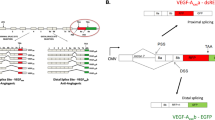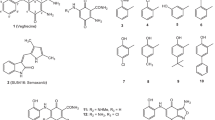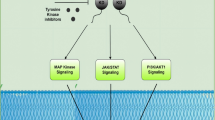Abstract
Vascular endothelial growth factor (VEGF), a pluripotent cytokine and angiogenic growth factor, plays crucial roles in embryonic development and tumour progression, and is over-expressed in many types of cancer and generally associated with tumour progression and survival rate. The polypurine/polypyrimide sequence located upstream (-89 to -43) of the promoter region of the human VEGF gene that can form specific G-quadruplex structures and raise the possibility for transcriptional control of the VEGF gene by G-quadruplex ligands. In the present study, we investigated the interaction between the 5-N-methyl-7-fluorine-quindoline derivatives (11-amino-5-N-methyl-7-fluorine- quindoline derivatives) and the G-rich sequence in VEGF's promoter and the subsequent effects on the biological functions of VEGF. We found the strong interaction between the 5-N-methyl-7-fluorine-quindoline derivatives and the G-rich DNA of VEGF, and this interaction might significantly influence the biological functions of VEGF, including the transcription and expression of VEGF, cell proliferation and apoptosis, and the stimulation of angiogenesis in chick embryo.
Similar content being viewed by others
Article PDF
Author information
Authors and Affiliations
Rights and permissions
About this article
Cite this article
Ou, Tm., Lu, Yj., Wang, Xd. et al. 11-amino-5-N-methyl-7-fluorine- quindoline derivatives: The Potential Anti-angiogenic Agents Targeting G-quadruplex Structure in Vascular Endothelial Cell Growth Factor. Nat Prec (2008). https://doi.org/10.1038/npre.2008.1946.1
Received:
Accepted:
Published:
DOI: https://doi.org/10.1038/npre.2008.1946.1



